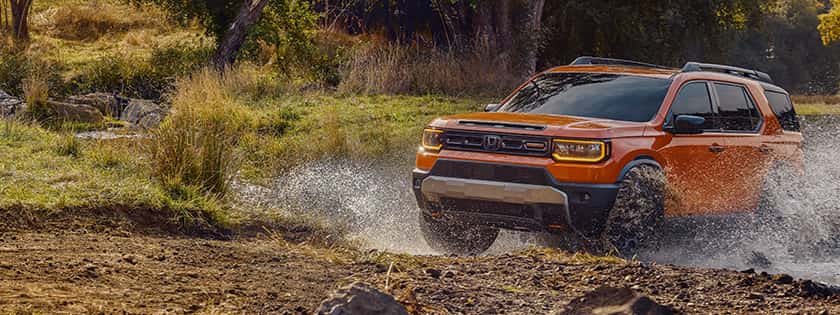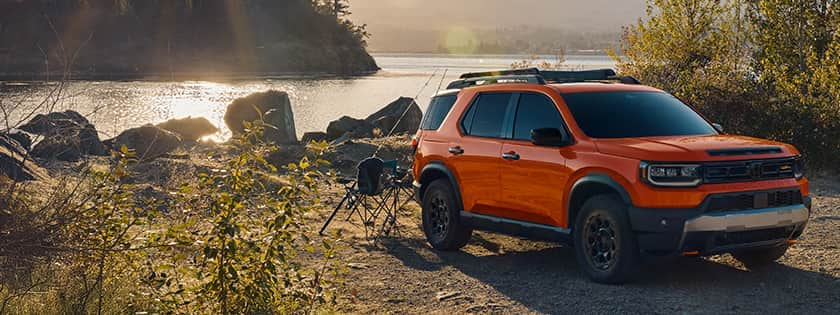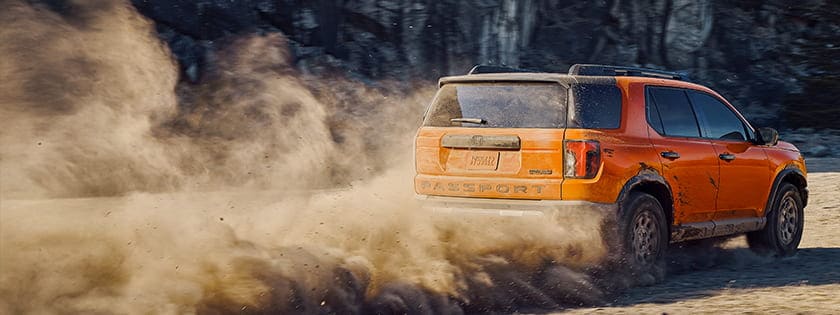
Some of you asked for it, all of you are going to get it. It's time to peek underneath a 2011 Porsche Panamera, the entry-level rear-drive version with the 3.6-liter V6 engine. Even though this is technically the base model, it's no slouch, as our recent Track Tested results demonstrate.
Stops from 60 mph take just 110 feet. It slithers through the slalom cones at an average pace of 69.7 mph and pulls 0.94 lateral-g on the skidpad. Not bad for a 4,025-pound 5-door hatchback.
Today's secret word is aluminum. Feel free to "scream real loud" every time you see something made of the stuff, but know first that if you do you'll ruin your future singing career by the second or third photo. We'll all waste less breath by pointing out parts made from other materials.

The Panamera's front end is suspended by double wishbones (aka control arms), with the upper a-shaped arm mounted high to reduce lateral loads in the arm and upper ball joint.

In this view, the coil spring, brake hoses, bushings and bolts are not made of aluminum. The non-ferrous shock absorber does NOT belong on that list, so it isn't.

Because AWD versions of the Panamera exist, the steering rack sits behind the front axle centerline. Yes, the tie-rod end (green) is made from aluminum, too.
Aluminum alone wasn't enough weight savings for the steering knuckle (aka upright), so they made it hollow (yellow).

The lower control arm is mostly L-shaped, but I guess it could be A-shaped if you're visualizing it with some oddball italic font.

The upper control arm is of course canted back for a dose of anti-dive geometry. There's also a suspension position sensor (green) that tells the computer where the suspension is in its travel and how quickly it's moving.

The front stabilizer bar (green) and its link (yellow) are both made of *gasp* steel. The fork is a fork (of course, of course) because all-wheel drive versions have an axle running through there.

This most-basic Panamera has 6-piston Brembo fixed front brake calipers. The ventilated and slotted cast-iron rotors measure 14.2 inches in diameter.

These Brembo calipers are one-piece units with a permanent "bridge", which means no pad insertion window. As a result, the caliper has to be removed via the two mounting bolts (green) in order to change brake pads. The pads themselves are equipped with electronic wear sensors (yellow) that let the driver know when that time has come.

An undertray smooths out most of the underside of the Panamera and directs some cooling air toward the front brakes.

The rear of our Panamera rides on a multilink rear suspension made almost entirely out of you-know-what. Two upper links (yellow, green) conspire to make an upper arm, of sorts, while a third link (white) controls the toe-in.

Here's a closer look at the toe-link (white), the upper link (yellow) and the hollow aluminum knuckle (green) to which they both connect.

But three slender links are not enough to locate a wheel in 3D space. Down below we find a hollow aluminum lower control arm (green), which does the heavy lifting. Not surprisingly, it's canted up at the front for a bit of anti-squat geometry. Note also that the lower shock mount and the stabilizer link share a mounting bolt (yellow).

The stabilzer link (green) and shock absorber's shared attachment point results in a motion ratio of about 0.85-to-1 for each. The steel coil spring sits just past the midway point, where the motion ratio looks to be around 0.55-to-1. Like we saw in the front, the rear stabilzer link and the stabilizer bar itself (yellow) are the other significant steel holdouts.

Here's another look without any of those pesky arrows.

It's not just the links that are aluminum -- the entire rear subframe (yellow) is made of the stuff. Like the front, the rear suspension also has a position sensor (green).

Four-piston (yellow) Brembo calipers squeeze 13-inch ventilated and slotted cast-iron rear rotors. Like the front, we find electronic pad wear sensors and fixed-bridge calipers that need to be removed in order to change brake pads.

Michelin Pilot Sport PS2 tires provide tremendous grip in 3-out-of-4 seasons. You can probably guess the season in which they fall short. The front tires are 255/40ZR20 and weigh 58.5 pounds mounted and ready to go. These larger rear units are 295/35ZR20 and tip the scales at 62.0 pounds when mounted.
And this is just the base model. Go further up the model lineup and the brakes and tires get larger, the springs switch from steel coils to air bags and front drive axles appear to support the 200 extra horsepower that's unleashed when you swap out the 300-horsepower 3.6-liter V6 for a 500-horsepower 4.8-liter twin-turbo V8.




